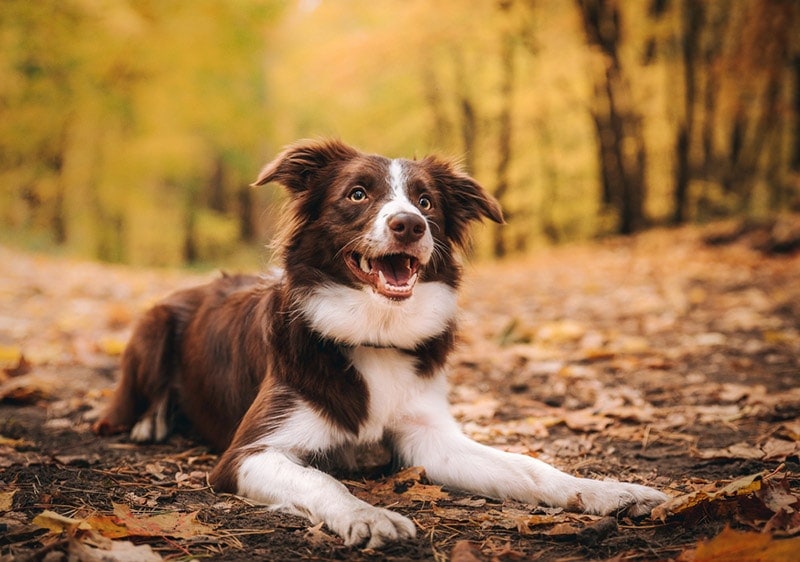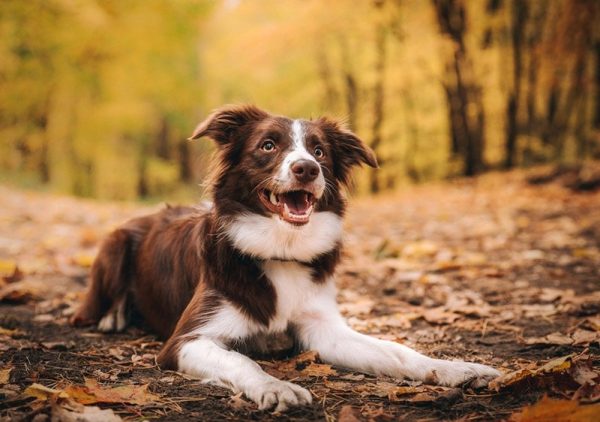Border Collies are famous for their intelligence and work ethic (not to mention their cuteness!). They excel in herding, whether it is sheep, cattle, or other animals. Herding is actually a pretty remarkable skill set that requires a complex understanding of the environment, an intuitive understanding of commands, and a strong bond between the owner and the dog. Even though it’s a remarkable skill, it’s not complicated to teach, thanks to the dogs’ intelligence and strong herding instincts.

The 13 Tips & Tricks to Train Your Border Collie to Herd
1. Start Early
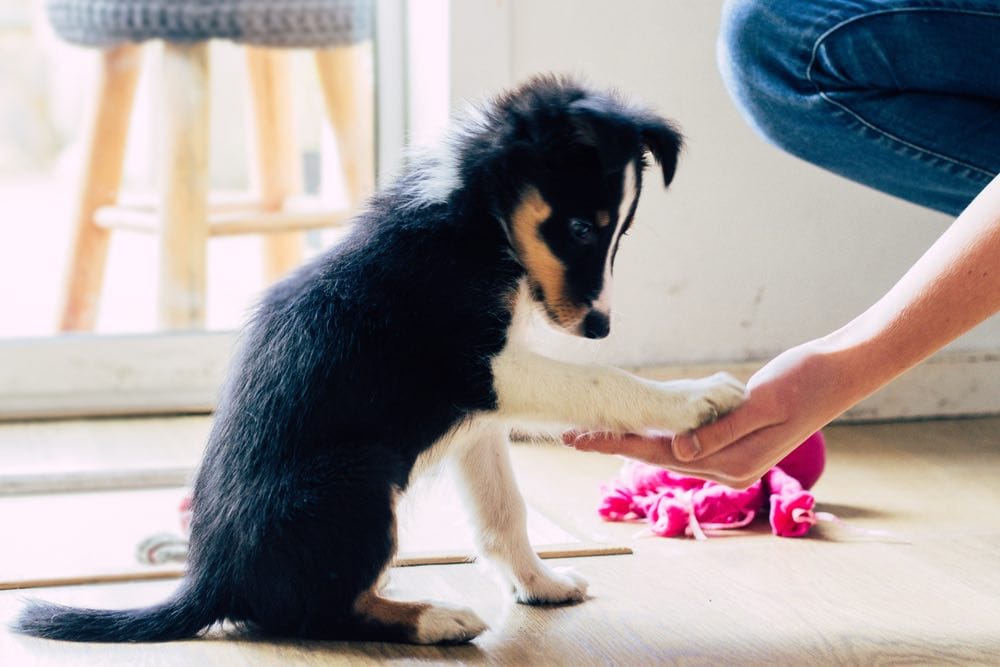
The ideal time to begin training a Border Collie is during their puppy stage, as they possess an innate eagerness to learn and they adapt quickly to new experiences. Although herding may seem like a complex skill, starting with foundational obedience training sets the stage for future success.
Introduce basic commands such as “drop it,” “sit” and “come,” and use treats or praise to reward good behavior. This initial training helps establish a strong bond between you and your fur baby, as well as instills essential habits that will make the transition to herding-specific exercises more seamless. As your pup matures and demonstrates proficiency in basic obedience, gradually introduce herding concepts and activities to build upon their existing skill set.
2. Use Positive Reinforcement
Positive reinforcement should be your go-to training method. It is a powerful and effective tool for training Border Collies. This method involves rewarding desired behaviors with praise, treats, or other positive stimuli, which encourages the dog to repeat those behaviors in the future. In contrast to punishment-based techniques, positive reinforcement fosters a strong bond between trainer and dog and creates an enjoyable learning environment.
To successfully use positive reinforcement during herding training, consistently reward your Border Collie for displaying correct behaviors. Be mindful of timing, ensuring that rewards are given immediately after the desired behavior occurs. This helps the dog associate the behavior with the reward, reinforcing the connection between the two.
3. Understand the Importance of Breed-Specific Training
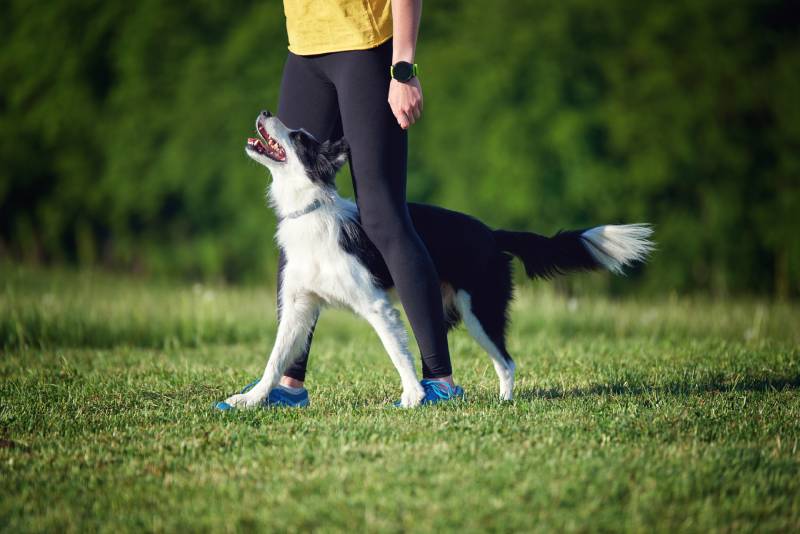
Breed-specific training is essential when working with Border Collies, as their unique traits and characteristics set them apart from other breeds. To develop a breed-specific training plan for your Border Collie, consider seeking advice from experienced Border Collie trainers or attending breed-specific workshops and seminars. These resources can provide valuable insights into this breed’s most effective training methods, ensuring your dog receives the specialized instruction needed to excel in herding tasks. Understanding and embracing the importance of breed-specific training can help you to unlock your Border Collie’s full potential as a herding dog.
4. Recognize Natural Herding Instincts
Border Collies are innately equipped with herding instincts that drive their behavior when working with livestock. These instincts manifest in several characteristic behaviors, including stalking, eyeing, and gathering. Recognizing and understanding these natural tendencies is crucial for trainers, as it allows them to harness and refine these instincts during training sessions, ultimately shaping them into effective herding techniques.
Stalking refers to the crouched, low-to-the-ground posture a Border Collie assumes when approaching livestock. This stealthy movement enables them to control and maneuver the animals without startling them. Eyeing is the intense, focused gaze the dog maintains on the livestock, which is used to exert psychological pressure and direct the animals’ movements. Gathering involves the dog circling and collecting the livestock into a cohesive group, allowing for easier management and control.
As a trainer, it’s essential to closely observe your Border Collie and identify these instinctual behaviors. Once recognized, you can begin incorporating them into your training sessions, guiding your dog to use these natural instincts effectively and purposefully. Encourage and reward the proper execution of these behaviors, while gently correcting any missteps.
5. Gather Essential Tools and Equipment

Having the proper tools and equipment is crucial for successful herding training, as they facilitate clear communication, ensure safety, and provide guidance for both the dog and livestock. The following items are essential for effective herding training:
Long Lead
A long lead (typically 20–30 feet) allows you to maintain control over your Border Collie while providing them with enough freedom to practice herding movements. It also helps keep the dog at a safe distance from livestock during early training sessions, minimizing the risk of injuries or accidents.
Whistle
A whistle serves as an efficient and consistent means of communicating commands to your dog from a distance. Whistle signals can be customized to convey specific instructions, such as stopping, changing direction, or increasing speed. Consistent use of whistle commands will help your Border Collie understand and respond to them quickly and accurately during herding tasks.
Shepherd’s Crook
A shepherd’s crook is a long, curved staff traditionally used by shepherds to guide and control livestock. It can be employed to gently direct animals, maintain a broad, safe distance between the dog and livestock, or assist in catching a stray animal if necessary. Additionally, the crook can be used as an extension of your arm, providing visual cues to your dog during training sessions.
6. Teach Verbal and Visual Commands
Effective communication is the backbone of herding. This can be achieved by teaching your dog both verbal and visual commands. Combining these two types of commands ensures that your dog understands and responds accurately to your instructions, regardless of the distance or environmental factors during herding tasks.
Begin by introducing basic verbal commands such as “come,” “stay,” “go,” and “lie down.” Practice these commands consistently, ensuring that you use the same words and tone each time to avoid confusion. Once your dog demonstrates proficiency in responding to verbal commands, introduce corresponding hand signals. These visual cues can be particularly helpful for Border Collies, as they are known to be highly responsive to body language and movement.
When teaching hand signals, make sure they are distinct and easily distinguishable from one another. For example, raising an open palm could signal “stop,” while pointing in a specific direction might indicate “go” or “move” in that direction. Consistently pair each hand signal with its corresponding verbal command, reinforcing the association between the two.
As your dog becomes familiar with both verbal and visual commands, gradually increase the distance between you and your dog during training sessions. This will help your Border Collie learn to respond to commands from afar, which is essential during herding activities.
7. Establish a Consistent, Positive Working Relationship

A strong working partnership is crucial for successful herding, and this begins with developing trust and mutual respect between you and your dog. To achieve this, maintain a consistent, patient, and reward-based training approach. Always communicate clearly and provide guidance and support as your dog learns new skills. Remember to celebrate their successes and progress, offering praise and rewards to reinforce positive behaviors.
8. Set Up Practice Sessions
To develop your dog’s herding skills, set up regular practice sessions that cater to their current skill level. Begin with simple, controlled environments that allow your dog to focus on mastering basic commands and techniques. As their proficiency improves, gradually increase the difficulty of the exercises by introducing more challenging scenarios, such as uneven terrain, obstacles, or distractions.
Expose your dog to various livestock types, such as sheep, cattle, or ducks, as each animal requires a different herding approach. Additionally, vary the size of the herd during practice sessions, starting with smaller groups and eventually working up to larger ones. This diversity in training will help build your dog’s adaptability and confidence, ultimately preparing them for a wide range of real-world herding situations.
10. Address Common Challenges

During herding training, your dog may encounter distractions or exhibit unwanted behaviors. To overcome these issues, train your dog to maintain focus on commands and tasks, even in the presence of distractions. If your dog displays undesired behavior, such as excessive barking or nipping, calmly correct them by redirecting their attention and reinforcing appropriate actions with praise or rewards. Consistent guidance and reinforcement will help your dog learn which behaviors are expected during herding activities.
11. Monitor Progress and Adjust Training Plans Accordingly
Regularly assess your dog’s progress to ensure the effectiveness of your herding training plan. Observe their performance during practice sessions, noting any areas where improvement is needed or where they excel. If you find that certain methods or exercises are not yielding good results, consider making adjustments or exploring alternative techniques.
12. Practice Makes Perfect
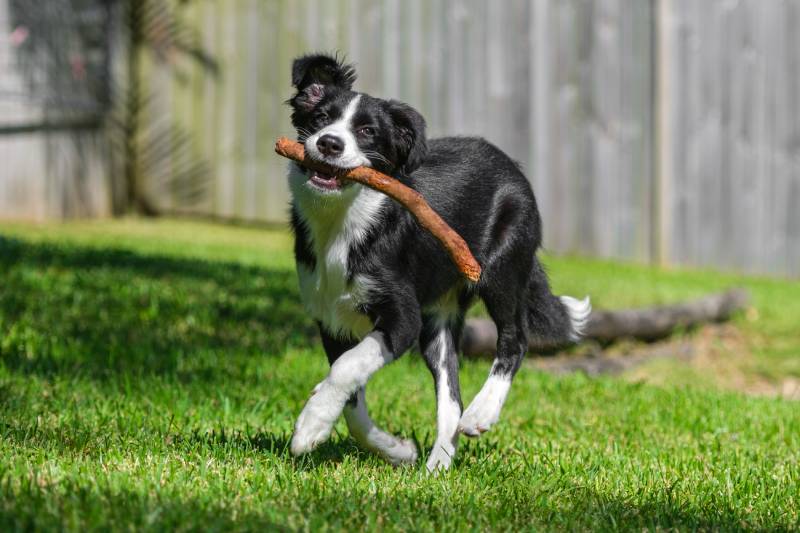
Consistent repetition is key to developing any skill, including herding tasks. Schedule regular practice sessions to reinforce learned behaviors and gradually increase your dog’s proficiency level. As your dog masters basic skills, continue to challenge them with more advanced exercises and real-world herding scenarios. This ongoing practice will solidify your dog’s understanding of herding techniques and cultivate their abilities, ultimately transforming them into skilled and confident herding partners.
13. Utilize Additional Resources When Necessary
Seeking professional advice and attending seminars or workshops can greatly enhance your understanding of herding techniques and provide valuable insights for handling various scenarios.
Consider joining local herding clubs or online forums where you can connect with other Border Collie owners and trainers. These communities can be an excellent source of support, advice, and inspiration as you navigate the challenges of herding training. Additionally, don’t hesitate to consult with a professional herding trainer if you encounter difficulties or require specialized guidance. Their expertise can prove invaluable in helping you and your dog progress and achieve your herding goals.
The 10 Safety Tips for Training Your Border Collie
- Properly leash your dog when in public spaces.
- Maintain a safe distance between the dog and livestock or other animals.
- Familiarize yourself with the tools used for herding, such as whistles and shepherd’s crooks.
- Teach verbal and visual commands to ensure clear communication during training sessions.
- Establish a positive working relationship with your Border Collie through reward-based techniques.
- Reinforce desirable behaviors through praise and treats to encourage repetition of desired actions.
- Set up practice sessions in controlled environments, gradually increasing difficulty as the dog’s skills improve.
- Monitor progress regularly to evaluate the effectiveness of the training plan and make necessary adjustments.
- Practice frequently to ensure the dog’s proficiency increases over time.
- Utilize additional resources, such as professional advice or seminars, when needed.

Conclusion
Herding training is an important part of Border Collie ownership and requires patience, consistency, and skill. Trainers should be sure to equip themselves with the proper tools and knowledge, establish a strong working relationship with the dog, reinforce desired behaviors, set up practice sessions that gradually increase in difficulty, and seek professional help when necessary. With lots of patience and dedication, trainers can develop their Border Collie’s herding skills to become a reliable partner on the farm or ranch.
Related Read:
Featured Image Credit: Julia Suhareva, Shutterstock
Contents
- The 13 Tips & Tricks to Train Your Border Collie to Herd
- 1. Start Early
- 2. Use Positive Reinforcement
- 3. Understand the Importance of Breed-Specific Training
- 4. Recognize Natural Herding Instincts
- 5. Gather Essential Tools and Equipment
- 6. Teach Verbal and Visual Commands
- 7. Establish a Consistent, Positive Working Relationship
- 8. Set Up Practice Sessions
- 10. Address Common Challenges
- 11. Monitor Progress and Adjust Training Plans Accordingly
- 12. Practice Makes Perfect
- 13. Utilize Additional Resources When Necessary
- The 10 Safety Tips for Training Your Border Collie
- Conclusion

